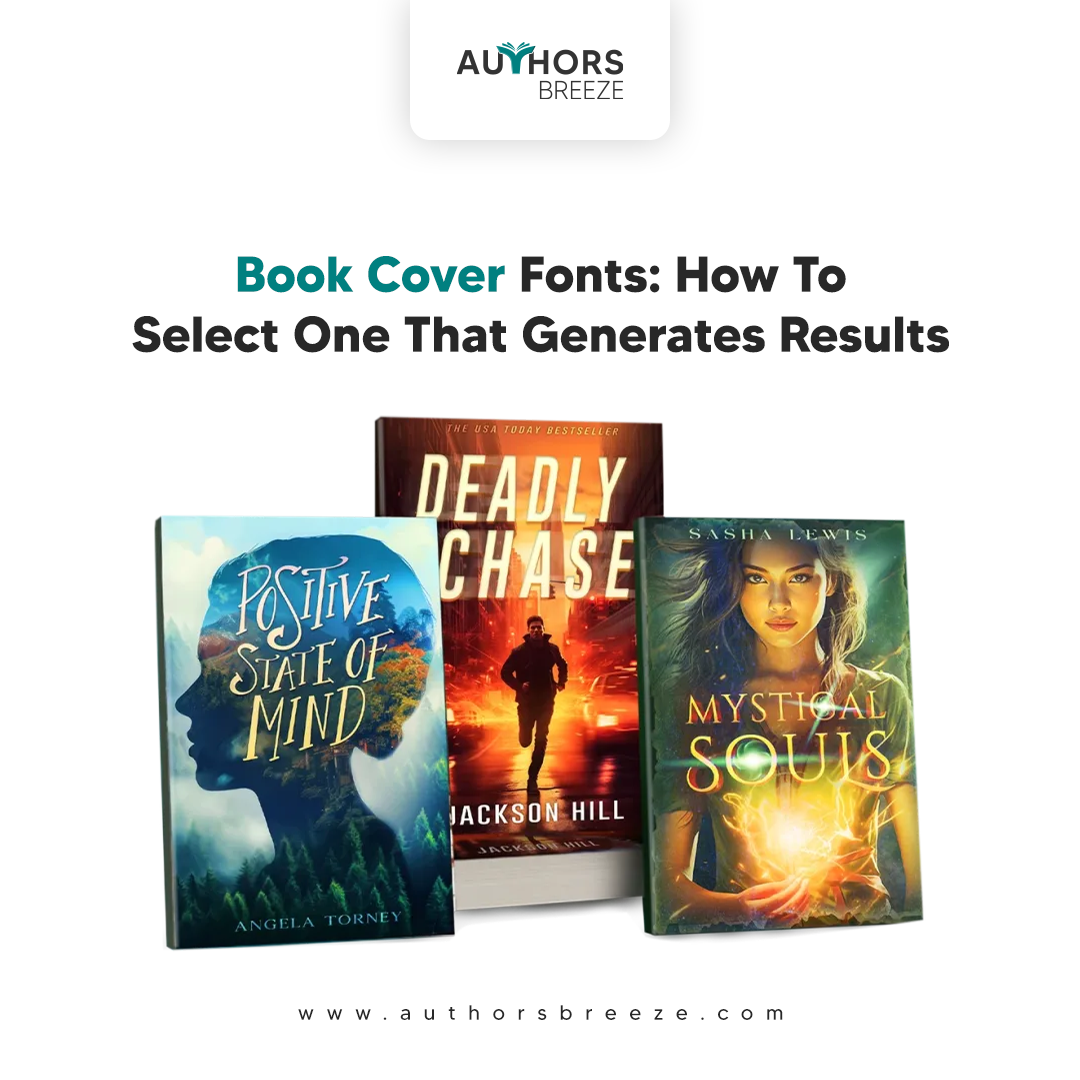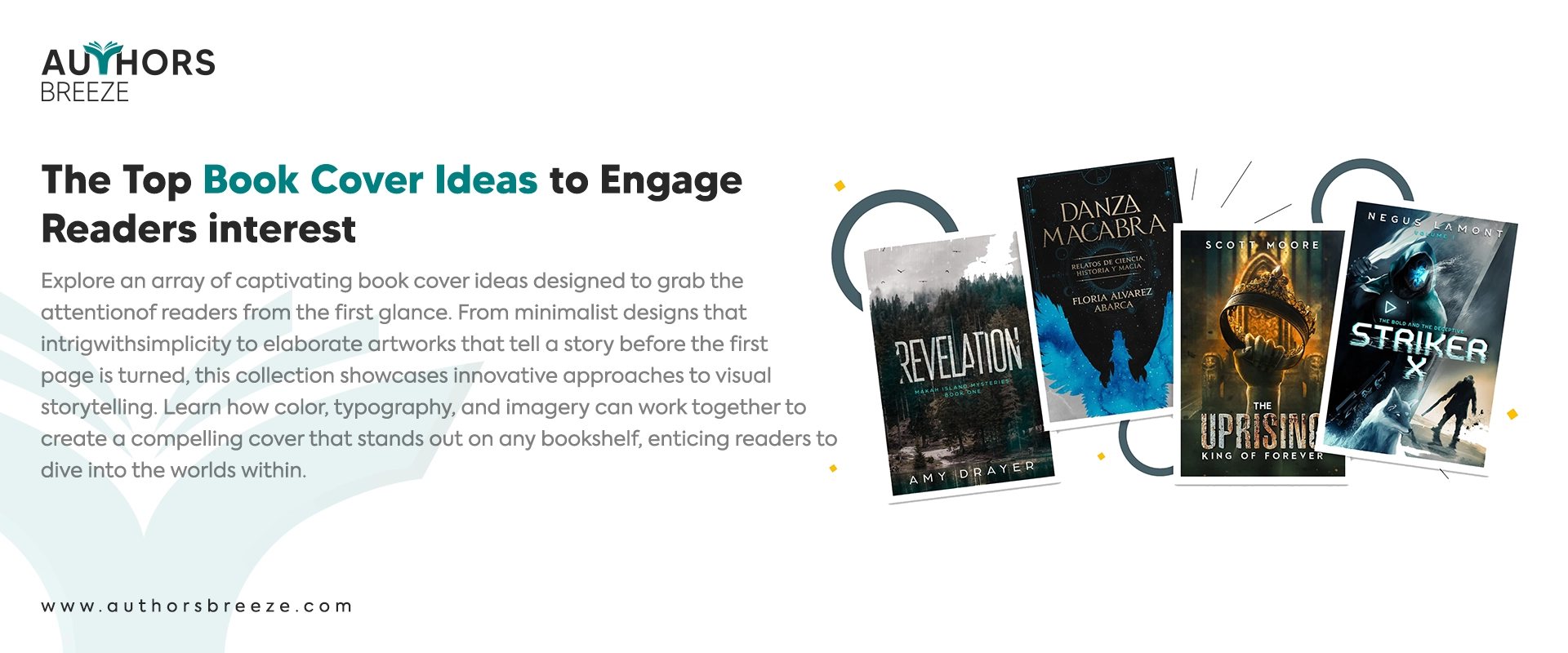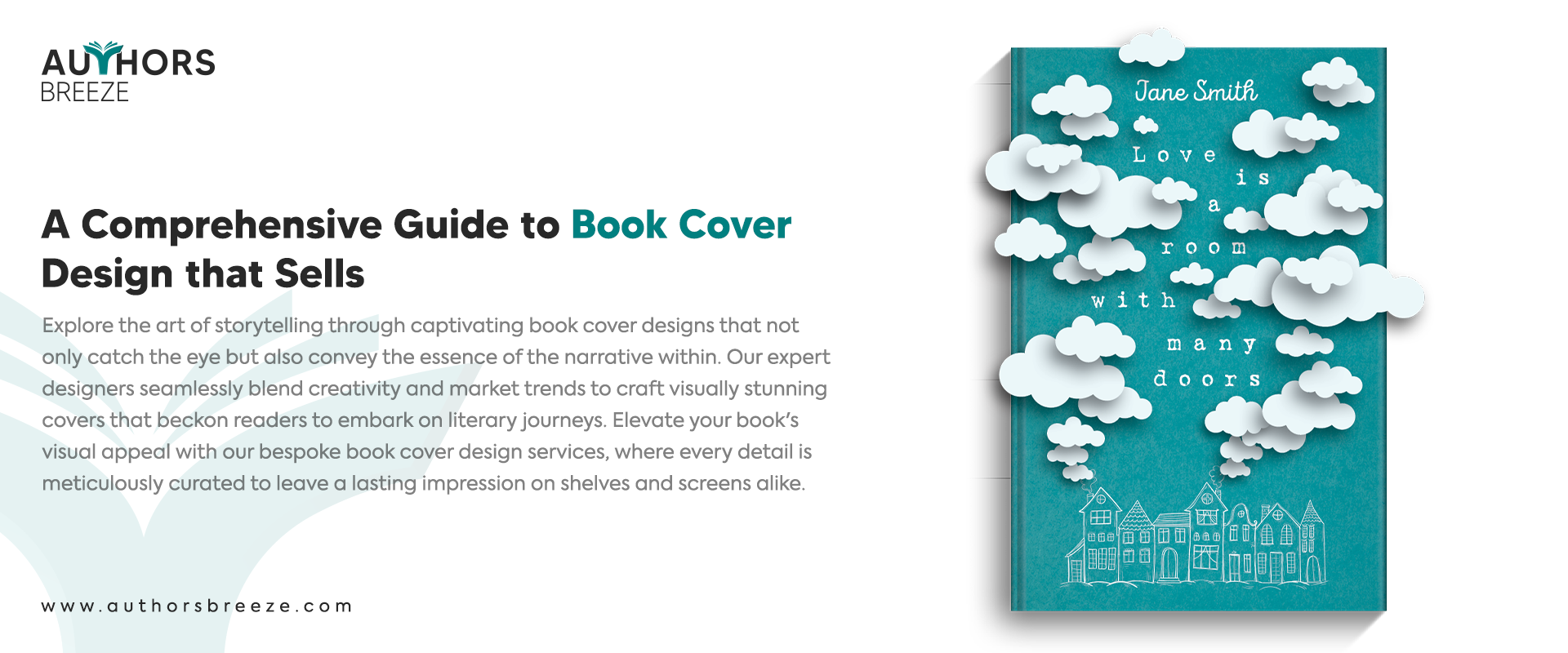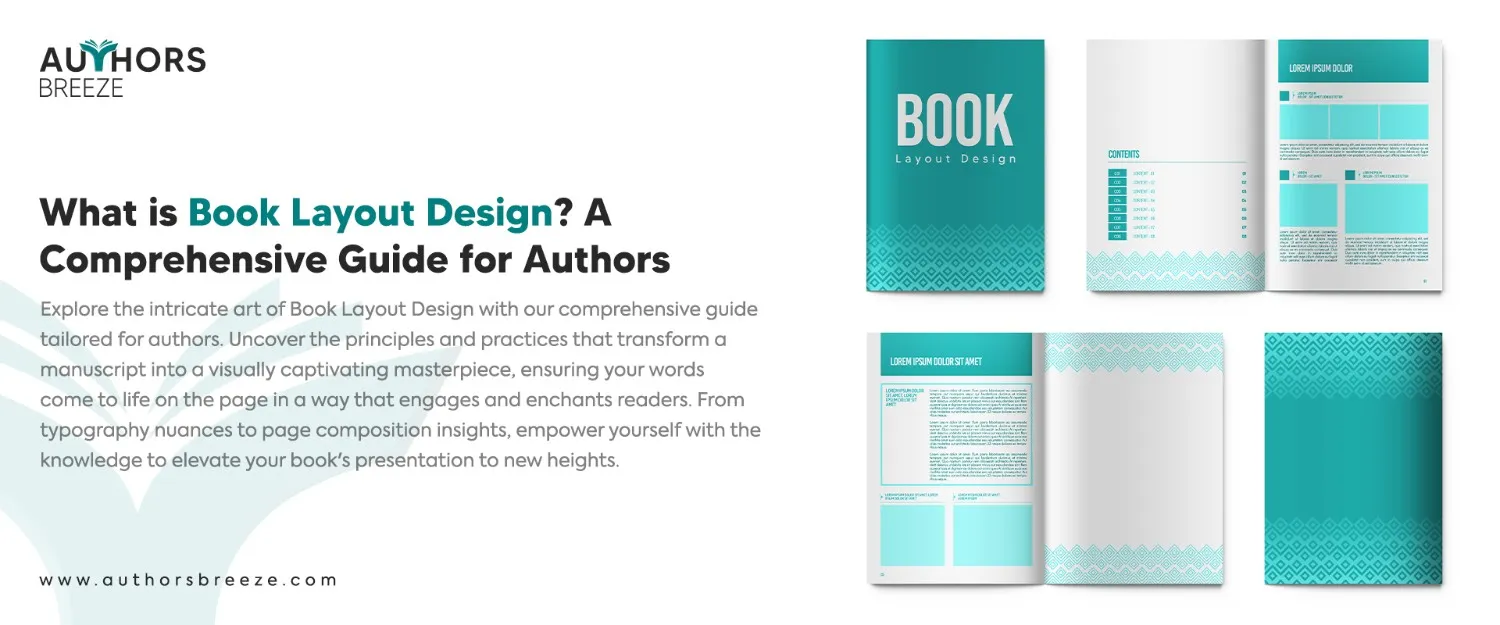Don't Have Time to Read? Listen to this Article Instead!
Key Takeaways: How To Choose Book Cover Fonts?
- Fonts Set the Tone – The right fonts on the cover convey emotions and indicate the genre before a reader even opens the book.
- Readability Is Crucial – A book title should be clear and legible, even at a small size. It helps to attract potential readers.
- Genre-Specific Fonts Matter – Different genres have established font styles. Therefore, choosing the right one helps set expectations and attract the right audience.
- Typography Is Part of Branding – A strong, recognizable font choice can contribute to an author's unique style and long-term brand identity.
- DIY vs. Professional Design – DIY offers cost savings and creative freedom, but a professional designer ensures polished, high-quality results.
- Trendy Fonts May Not Age Well – Choose timeless fonts to make sure your book cover remains relevant for years to come.
- Use Tools for Assistance – Resources like Google Fonts, Adobe Fonts, and Canva help authors explore and test different typography options.
Right Fonts, Perfect Cover, High Sales
Confused about which fonts to pick for your book cover and struggling to make it professional? Let our experts design a high-quality, genre-appropriate front for your literary work.
Introduction
When it comes to creating a book cover, every single detail matters. From the colors to the images, each element plays a role in attracting readers. But one of the most important aspects of book covers is the fonts.
Yes, you read it right! The font!
The way your book's title and author's name look can make or break your book's first impression.
This is because a book cover is the first thing people notice about a book. Therefore, your book cover must incorporate the right fonts to:
- Look professional
- Attract the right readers
- Boost sales
But choosing the best font can also be a little tricky. That is why, in this guide, we'll explore how to select book cover fonts that grab attention and generate results.
So, let's get started!
The Role Of Fonts In Book Cover Design
When you think about a book cover design, the first thing that probably comes to mind is the imagery, the colors, or the illustrations.
But fonts? They might seem like a small detail, but they play a huge role in how your book is perceived. In fact, the right font can grab attention and make a strong first impression.
Therefore, let's explore how fonts shape book cover design!
They Create An Emotional Connection
Fonts are not just letters, they carry emotions and mood. The style, shape, and weight of a font can set a particular tone and evoke specific feelings in your audience. For example:
- Bold, blocky fonts (Impact, Bebas Neue) feel strong and intense. They are perfect for thrillers or action-packed books.
- Elegant script fonts (Great Vibes, Pacifico) feel romantic and artistic. They are ideal for poetry or memoirs.
Book Cover Fonts Communicate Your Genre
There is a famous saying, “Don't judge a book by its cover”. It’s true to some extent. But most of the time, readers often judge a book by its cover, and fonts are a big part of that judgment.
Different genres have established visual languages, and fonts play a key role in signaling what kind of book you're offering.
For example:
- Sci-fi books might use sleek, innovative fonts with sharp edges to suggest technology and innovation.
- Children's books often use playful, rounded fonts to feel fun and approachable for young readers.
They Influence Readability and Accessibility
A beautiful font might catch someone's eye, but if it's hard to read, it's doing more harm than good. This is because readability is critical, especially for your book title. Also, readers need to understand what it says, even if it's just a thumbnail on an online store.
However, to ensure optimum readability and legibility, certain things need to be kept in mind:
- Avoid overly decorative fonts for the main title. While they might look pretty, they can be difficult to read, especially in smaller sizes.
- Contrast is key. Make sure your font color stands out against the background. For example, white text on a light background will be hard to read.
- Size matters. Your title should be large enough to be legible, even from a distance.
- Font hierarchy matters. The book title should be the largest text, with the author's name and subtitle smaller but clearly readable.
Book Fonts Build Brand Recognition
Your book cover is part of your author’s brand, and the fonts you choose can help establish that brand. If you're writing a series, using consistent fonts across all your covers can create a cohesive look that readers will recognize.
For example:
“J.K. Rowling's Harry Potter series uses a distinctive, custom font for the titles, which has become iconic”
Fonts Differentiate Your Book
In a crowded marketplace, your book needs to stand out. The right font can help your book cover to grab attention and differentiate your book from others.
Understanding Font Styles For Book Covers
Different fonts create different feelings on a book cover. Therefore, before diving into font selection, let's understand the basic categories of fonts. Some of the common styles include the following:
Serif Fonts
These fonts have little “feet” or lines at the ends of the letters and are often seen as formal and reliable. Serif fonts are great for historical fiction, academic, or serious books.
For example:
“Times New Roman and Georgia.”
Sans-Serif Fonts
These fonts don't have the little “feet.” They are modern and work well for contemporary, tech, or minimalist designs.
For instance:
“Arial and Helvetica.”
Script Fonts
These fonts mimic handwriting and can range from elegant and fancy to casual and playful. Script fonts are perfect for romance, poetry, or any book that wants to convey a personal touch.
For example:
“Brush Script and Pacifico”
Display Fonts
These are decorative fonts that are designed to stand out. They can be bold, quirky, or artistic. Display fonts are ideal for genres like fantasy, sci-fi, or children's books.
For instance:
“Impact and Lobster.”
How To Choose The Right Fonts For Your Book Cover?
Now that you know the basic font categories, let's talk about how to pick the right font for your cover.
Match The Font To Your Genre
When it comes to fonts, remember that different genres have different expectations. Therefore, some general font recommendations for each genre are as follows:
- Romance: Use elegant, flowing fonts, such as Playfair Display and Great Vibes, to capture love and passion, creating a dreamy, emotional feel.
- Mystery/Thriller: Incorporate bold, sharp fonts to add suspense and keep readers on edge. E.g., Bebas Neue, Impact, etc.
- Sci-Fi/Fantasy: Futuristic or decorative fonts like Cinzel enhance the sense of wonder and adventure.
- Non-Fiction: Clean and modern sans-serif fonts such as Helvetica and Futura ensure clarity, credibility, and easy reading.
Consider Readability
No matter how beautiful a font is, if it's hard to read, it's not doing its job. Your book title needs to be clear and legible, even from a distance or when viewed as a thumbnail online.
Keep It Simple
Sometimes, less is more. A simple, clean font can be just as impactful as a fancy one. If your cover design is already busy with images or colors, a simple font can help balance it out. Remember, the goal is to make your title stand out, not to overwhelm the reader.
Pay Attention To Font Pairing
If you're using more than one font on your cover, make sure they complement each other. This can make your book cover look more professional. A common approach is:
- Serif + Sans-Serif: A serif font for the title and a sans-serif font for the subtitle or author name.
- Bold + Light: A bold title font with a lighter secondary font creates contrast and balance.
Test Different Fonts
Don't be afraid to experiment with different fonts. Create several versions of your book cover with different fonts and see which one resonates the most. You can also get feedback from friends, family, or professional beta readers to see which font they prefer.
Fonts Tell Stories, Make Yours Count
Not sure which font suits your book? Our book cover designers specialize in typography selection to match your genre, tone, and brand.
Common Mistakes To Avoid When Choosing Book Cover Fonts
- Using Too Many Fonts: Stick to one or two fonts at most. Using too many can make your cover look messy and unprofessional.
- Ignoring Hierarchy: Make sure your title is the most prominent element on the cover. The author’s name and any subtitles should be smaller and less dominant.
- Choosing Trends Over Timelessness: While it's tempting to use the latest trendy font, remember that trends come and go. Choose a font that will still look good years from now.
DIY Vs. Hiring A Designer
After picking the fonts for your book cover, choosing between designing it yourself or hiring a professional designer can be a significant decision. Here's a breakdown of the advantages of each option:
Benefits of Doing It Yourself (DIY)
Cost-Effective
DIY projects are typically more budget-friendly since you're not paying for professional services.
Creative Control
You have complete control over the design process, allowing you to personalize every detail to your taste.
Learning Opportunity
DIY projects allow you to develop new skills, such as design, crafting, or technical expertise.
Flexibility
You can work at your own pace and schedule without being tied to a designer's timeline.
Personal Satisfaction
Completing a project on your own can bring a sense of accomplishment and pride. It also provides you with a chance to express your creativity and individuality.
Benefits Of Hiring A Designer
Professional Expertise
Designers bring specialized knowledge, training, and experience to the table, ensuring a high-quality result.
Time-Saving
Hiring a designer saves you time and effort. They handle all the complexities of the process, allowing you to focus on other priorities.
Access To Resources
Designers often have access to exclusive materials, tools, and industry connections that can elevate the project.
Tailored Solutions
A designer can create a cohesive and functional design that aligns with your vision, lifestyle, and budget.
Which One Is Right For You?
If you're creative, have time to learn, and want to save money, in that case, choose DIY.
On the other hand, hire a book cover designer if you want a professional, eye-catching cover that stands out in the market.
Important: Book Cover Fonts Copyrights And Licensing
When designing a book cover, it's important to remember that fonts are protected by copyrights, which means you're allowed to use them for commercial purposes, like on a book cover. However, to use a font legally, you need to make sure you have the proper license.
Luckily, it is easy to do, but most great fonts for titles aren't free to use. Yes! That is how the book publishing world moves; You get what you pay for!
So, if you are working with a designer, you are sorted. Professional designers have access to thousands of fonts and can help you choose the best one for your project. Also, they are familiar with book marketing strategies. They make sure your title and author name stand out while fitting the overall design.
But if you're planning to design your own book cover, you can download the fonts that you need, but always check the licensing terms to ensure commercial use is allowed. If you already have a font in mind, search for it online, but if you are still confused, then seek help from tools offering free fonts with commercial use rights.
Tools To Help You Choose Fonts
There are plenty of tools available to help you find the perfect font for your book cover. Some of them are as follows:
- Google Fonts: A free resource with a wide variety of fonts that you can easily download and use.
- Adobe Fonts: Offers a vast library of high-quality fonts, many of which are included with Adobe Creative Cloud subscriptions.
- Font Squirrel: A great place to find free, commercial-use fonts.
- Canva: An online design tool that offers a range of fonts and templates for book covers.
Successful Book Covers and Best Book Cover Fonts Selections
Lastly, let's take a look at some of the best book cover fonts that made book covers a success:
Trajan
Used in many bestsellers, this classic serif font gives a timeless and elegant feel. Great for historical fiction and literary works.
For example:
“The Da Vinci Code by Dan Brown”
Gotham
A clean and modern sans-serif font that looks bold and professional. Often used in thrillers and non-fiction books.
For instance:
“Becoming by Michelle Obama”
Baskerville
A refined serif font that feels sophisticated and trustworthy, ideal for classics and literary fiction.
For example:
“To Kill a Mockingbird by Harper Lee”
Futura
A sleek and minimal sans-serif font with a futuristic feel, commonly used in sci-fi and modern fiction.
For instance:
“1984 by George Orwell”
Mrs Eaves
An elegant serif font with a handwritten touch, perfect for romance and personal stories.
For example:
“Eat, Pray, Love by Elizabeth Gilbert”
Conclusion
Choosing the right font for your book cover is essential in making a strong first impression. Fonts help convey the book's genre, set the tone, and enhance readability. Whether you are using a classic serif for a historical novel or a bold sans-serif for a thriller, selecting the right typography can significantly impact your book's appeal and sales.
If you have the time and creativity, a DIY approach can save money, but hiring a professional from Authors Breeze can ensure a polished and market-ready design. No matter which route you take, focus on clarity, consistency, and genre alignment to create an eye-catching book cover.
FAQs
What are the best fonts for book covers?
The best book cover fonts depend on the genre, but popular choices include Baskerville, Garamond, and Futura for their readability and aesthetic appeal.
How many fonts should be on a book cover?
A book cover should typically have no more than two fonts: one for the title and another for the subtitle or author's name.
What fonts do professional book designers use?
Professional designers often use serif fonts (Garamond, Baskerville) for classic looks and sans-serif fonts (Futura, Montserrat) for modern designs on book covers.
Professional Cover, Effective Marketing
Whether you’re self-publishing or preparing for a bestseller, acquire our budget-friendly services and market your cover in a way that sells your book







